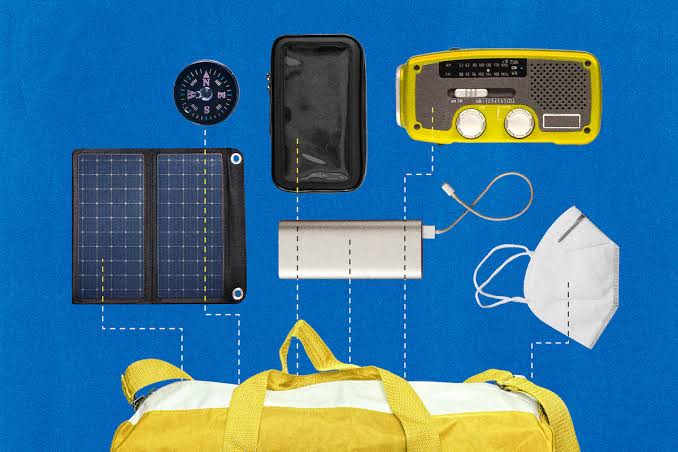Gadgets have become an inseparable part of modern life, powering communication, entertainment, work, and daily convenience. From smartphones and laptops to smart home devices and wearables, these tools enhance efficiency and connectivity. However, their widespread use also raises critical questions about environmental sustainability. In 2025, as global attention shifts toward climate change and eco-friendly practices, understanding how gadgets affect the environment is more important than ever. While technology can contribute to sustainability, it also poses challenges in terms of energy use, resource consumption, and electronic waste.
Resource Consumption in Gadget Production
The production of modern gadgets requires significant natural resources, including metals, plastics, and rare earth elements. Mining for materials like lithium, cobalt, and gold has environmental consequences, including deforestation, soil degradation, and water pollution.
Key considerations include:
- Rare Earth Mining: Used in batteries and electronics, often with high environmental costs.
- Plastic and Metal Usage: Increases the demand for energy-intensive manufacturing.
- Global Supply Chains: Transporting raw materials and finished gadgets adds to carbon emissions.
As demand for newer devices grows, manufacturers face pressure to adopt more sustainable sourcing and recycling initiatives.
Energy Consumption and Carbon Footprint
Gadgets, both in their production and usage, contribute to global energy consumption. Data centers powering cloud storage, streaming, and online communications further add to the carbon footprint.
Impacts on sustainability include:
- Energy-Intensive Manufacturing: Producing semiconductors, screens, and batteries requires large amounts of electricity.
- Usage Emissions: Charging smartphones, laptops, and smart devices consumes energy, especially if sourced from fossil fuels.
- E-Waste Lifecycle: Disposing of outdated gadgets without proper recycling leads to environmental harm.
Efforts like energy-efficient designs and renewable-powered production facilities are helping reduce the overall impact.
Electronic Waste (E-Waste) Challenges
E-waste has emerged as one of the most pressing environmental concerns associated with gadgets. Rapid technological upgrades and short product lifespans lead to millions of discarded devices every year.
Key challenges include:
- Toxic Components: Many devices contain lead, mercury, and other hazardous materials.
- Low Recycling Rates: A large percentage of e-waste ends up in landfills rather than being reused or recycled.
- Global Waste Transfer: Some countries export e-waste to developing nations, where improper disposal harms local ecosystems and communities.
Promoting recycling programs and encouraging longer device lifespans are crucial steps toward reducing e-waste.
Positive Impacts of Gadgets on Sustainability
Despite their environmental challenges, gadgets can also support eco-friendly initiatives and sustainability efforts. Many modern technologies are designed to optimize resource usage and reduce waste.
Examples of positive impacts include:
- Smart Home Devices: Thermostats, lighting, and appliances reduce energy consumption.
- Digital Communication Tools: Video conferencing and cloud collaboration minimize travel, reducing carbon emissions.
- Renewable Energy Monitoring: Gadgets help track solar, wind, and other clean energy systems for efficient use.
- Environmental Monitoring: Sensors and IoT devices help track pollution, deforestation, and wildlife protection efforts.
By integrating sustainability-focused gadgets, individuals and organizations can actively lower their environmental footprint.
Role of Sustainable Design and Innovation
Manufacturers are increasingly adopting eco-friendly practices in gadget design to balance functionality with sustainability. These practices aim to reduce waste and improve recyclability.
Innovative approaches include:
- Modular Devices: Laptops and smartphones with replaceable parts extend product life.
- Recycled Materials: Using reclaimed plastics, metals, and eco-friendly packaging.
- Energy Efficiency Standards: Devices designed to consume less power during operation and standby.
- Software Longevity: Providing updates for older devices to reduce unnecessary upgrades.
Sustainable design reduces the negative environmental impacts of gadget production and use.
Consumer Responsibility in Gadget Usage
Individuals also play a crucial role in mitigating the environmental impact of gadgets. Mindful consumption and responsible disposal are key to building a sustainable tech ecosystem.
Practical steps for consumers include:
- Extending Device Lifespan: Regular maintenance, software updates, and repairs delay replacements.
- Participating in Recycling Programs: Proper e-waste disposal ensures materials can be reused.
- Choosing Energy-Efficient Gadgets: Opting for certified low-power devices reduces energy consumption.
- Supporting Eco-Friendly Brands: Encouraging companies to prioritize sustainability through purchasing decisions.
Collectively, consumer choices can push the tech industry toward greener practices.
Conclusion
Gadgets have a dual impact on environmental sustainability, offering tools to promote efficiency and green innovation while also contributing to resource depletion, energy consumption, and e-waste. The challenge lies in balancing technological progress with environmental responsibility. In 2025, manufacturers, governments, and consumers all have a role in reducing the negative impact of gadgets by embracing sustainable design, responsible production, and conscious usage. By aligning technology with eco-friendly initiatives, society can enjoy the benefits of modern gadgets while protecting the planet for future generations.



